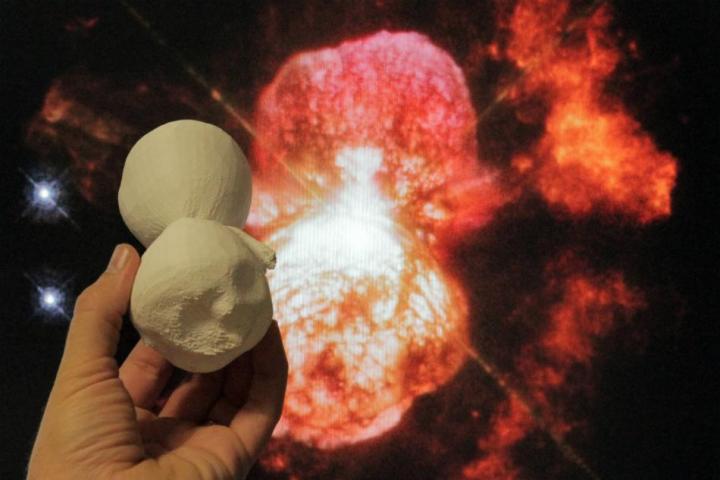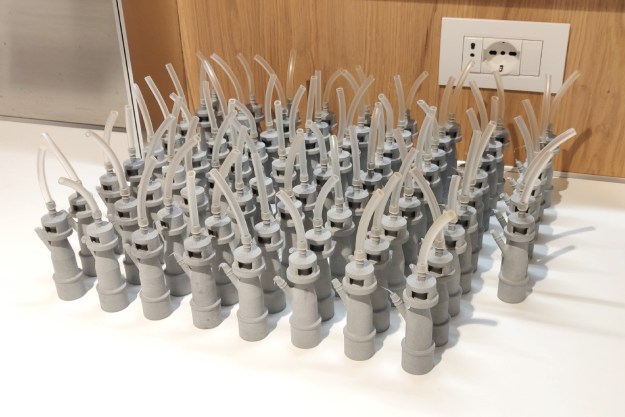
A team of NASA astronomers have come together to create the first high-resolution 3D model of a massive binary system called Eta Carinae. Located more than 7,500 light years from Earth, this system is of particular interest among astronomers, because of its enormous size; it’s smaller star is about 30 times the mass of our sun and nearly a billion times more luminous, while it’s big brother star is a whopping 90 solar masses, emitting 5 million times the sun’s energy output.
Eta Carinae is also famous for a little explosive event that happened to it over 150 years ago called the “Great Explosion.” Between 1838 and 1845, the system produced a whole lot of light, almost as much as a supernova explosion, but the stars ultimately survived. The event caused a giant shell of gas — between 10 and 40 times the sun’s mass — to be shot into space.
The result? A ridiculously large hourglass-shaped cloud of dust called the Homunculus Nebula, which is continually expanding at more than 1.3 miles per hour.

To create their own model this system, NASA astronomers utilized the European Southern Observatory’s Very Large Telescope and its X-Shooter spectrograph, imaging near-infrared, visible and ultraviolet wavelengths across the nebula. The team ultimately took 92 different swaths of the system, creating the most complete spectral map to date.
That data was then used to create a handheld shape model, which was then 3D printed. According to the researchers, their work helped them to better understand the properties of the Homunculus Nebula, as well as answer questions about its formation.
“Our model indicates that this vast shell of gas and dust has a more complex origin than is generally assumed,” said Thomas Madura, a NASA Postdoctoral Program fellow at NASA’s Goddard Space Flight Center in Greenbelt, Maryland, and a member of the study team. “For the first time, we see evidence suggesting that intense interactions between the stars in the central binary played a significant role in sculpting the nebula we see today.”
And the best part of the whole process is that NASA isn’t keeping their details a secret. If you own a 3D printer at home, just download the publicly available plans (and if you’re interested, their study published in the journal Monthly Notices of the Royal Astronomical Society), and you can have your very own nebula paperweight keepsake that fits in the palm of your hand.
[Images courtesy of NASA]
Editors' Recommendations
- 3DMakerpro’s Seal is a pocket-sized scanner to make next-gen precision 3D prints
- Need a last-minute Halloween costume? Check out these 3D-printable getups
- The future of making stuff: Inside the evolution of 3D printing with Formlabs
- Father’s Day Gift Idea: These cheap 3D printers are on sale for less than $300
- 3D printing lets hospitals make ventilator substitutes with common equipment


